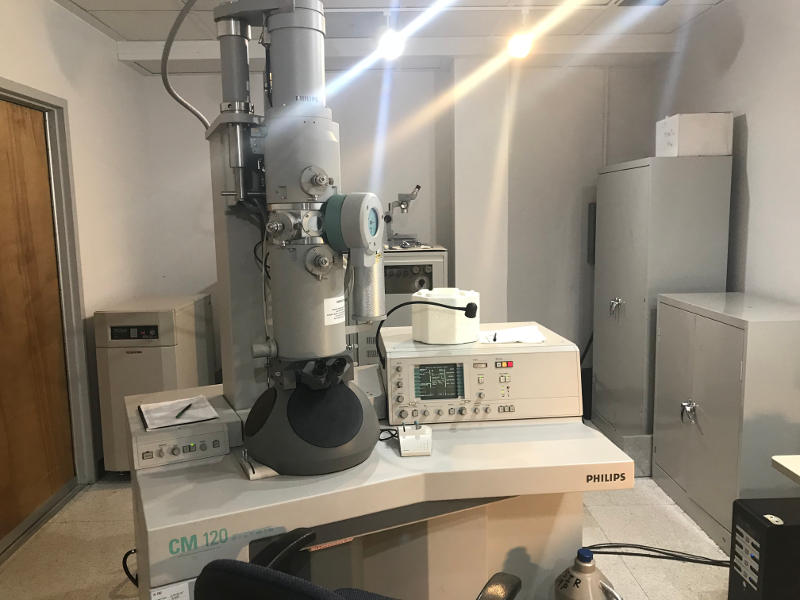
Startup
Follow these steps before starting use of the microscope. After you have become familiar with the controls and navigating the menu pages, you can skip to the abbreviated CHECKLIST (**jump to list**) for essential items that must be verified before inserting a specimen holder. Most of the controls for the preliminary operations are on the right hand console:
- Check that the HT, UHV, and HIVAC indicator LEDs on the right panel are lit.
- Using the Green keys on the right side of the CRT monitor, select MODES, then TEM or TEM Low Dose. The Ready button below the screen serves as an Enter key or to go back one menu page at a time.
- Either of the Mode pages serves as your main page from which other pages and functions are selected. If you do not see either of the TEM Bright Field or TEM Low Dose Bright Field pages, press the Ready button one or more times until the MODES option is available. After pressing MODES, select the appropriate option.
- From the TEM or TEM Low Dose menu page, press the VACUUM key to display the diagram of the vacuum system, which shows valves, pumps, and pressure gauge locations along with vacuum readings at each gauge location. The displayed values are relative and do not correspond directly to specific pressures.
- The top of the vacuum page should display VACUUM STATUS: READY and the IGP (Ion Getter Pump) reading should be less than 20. With no specimen in the microscope, the IGP reading will usually be 10 or less.
- The liquid nitrogen (LN) cold trap must be used to minimize vacuum degradation and contamination of your specimen from interaction with the electron beam. If the dewar has been filled beforehand, check to see that it is nearly full. You should recheck it and add LN every couple of hours during use of the instrument. When adding LN to the dewar, make sure that the rubber cover is in place over the viewing window. The window can break if it is cooled by spilling LN, requiring a very expensive repair. If the dewar is at room temperature, LN must be added very slowly until it has cooled. The liquid will boil off rapidly at first and must be topped off after the initial cool-down. After starting the cool-down, it will take a minimum of 45 minutes before the temperature of the specimen area has stabilized, and a holder can be inserted.
- The Filament heating knob should be all the way off. Verify this by turning it counterclockwise. A beep sound should be heard when it is at zero – no filament heating. The knob has no stop – it can be turned continuously with repeated beeping at the minimum setting.
- The stage position should be reset so that all axes are at zero or within a few µm of zero. To do this, press the COMPUSTAGE green key, then select COMPUCTRL from the new display options, followed by pressing RESET HOLDER. The stage should move to zeroes on the X, Y, Z, and tilt axes. Pressing the Ready button two times will return to the main page.
- It is a good practice, although not essential, to check that the Intensity knob on the left panel is turned fully clockwise until it beeps (minimum intensity). This will reduce the potential for damage to your specimen after it is inserted and the filament is first turned on.
- After completing these preliminary steps, you can proceed to loading a grid and inserting the specimen holder into the Compustage.
CHECKLIST
- HT, UHV, and HIVAC indicator LEDs on the right panel are lit.
- VACUUM STATUS displayed at top of vacuum menu page should be READY.
- IGP reading on vacuum page less than 20.
- Cold trap dewar should be already cooled and nearly full (cover viewing window when adding LN). Wait a minimum of 45 minutes for cool-down.
- Stage should be reset so that all axis positions are zero or within a few µm.
- Filament should be off – knob fully counterclockwise until it beeps.
- Intensity knob on left panel should be turned to minimum intensity – fully clockwise until it beeps.

